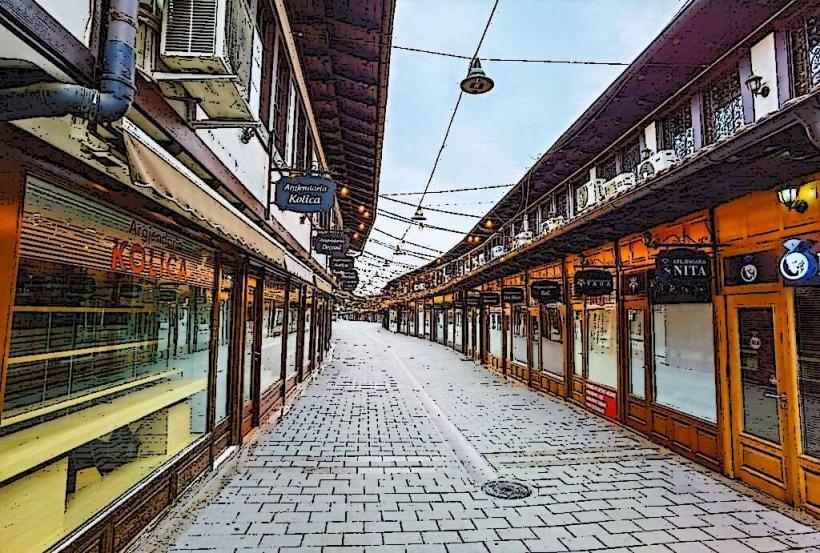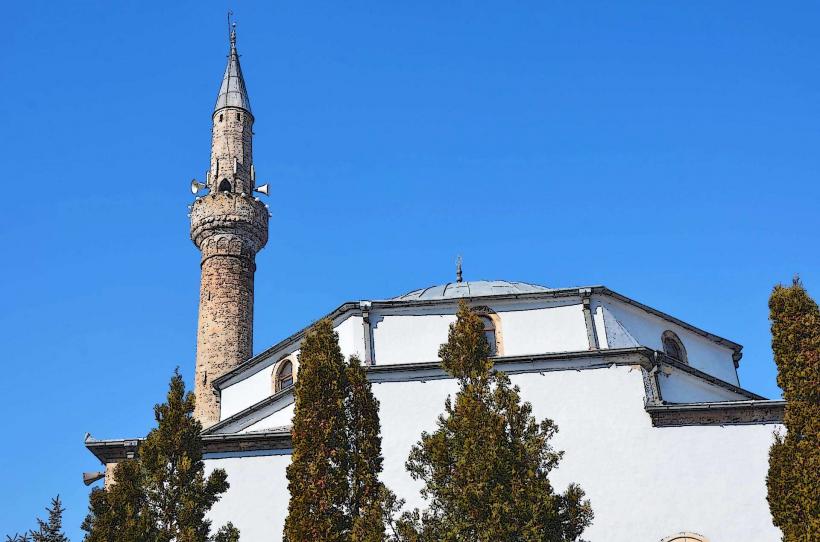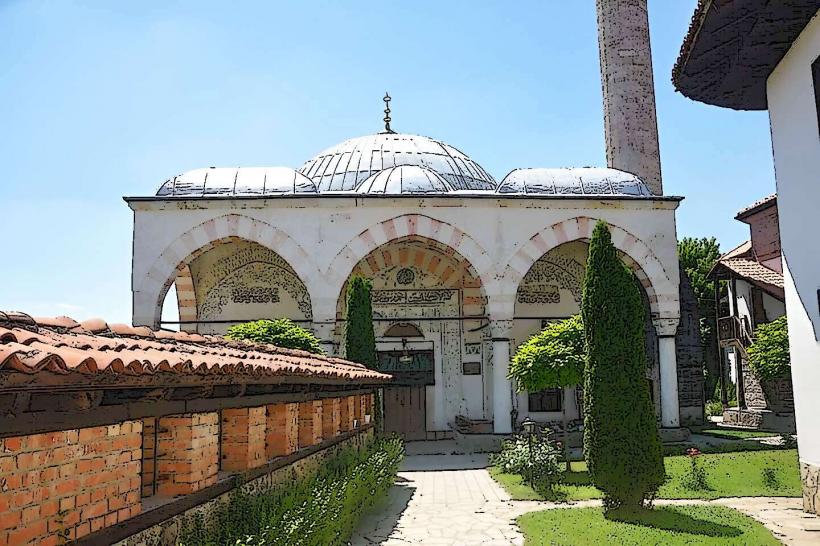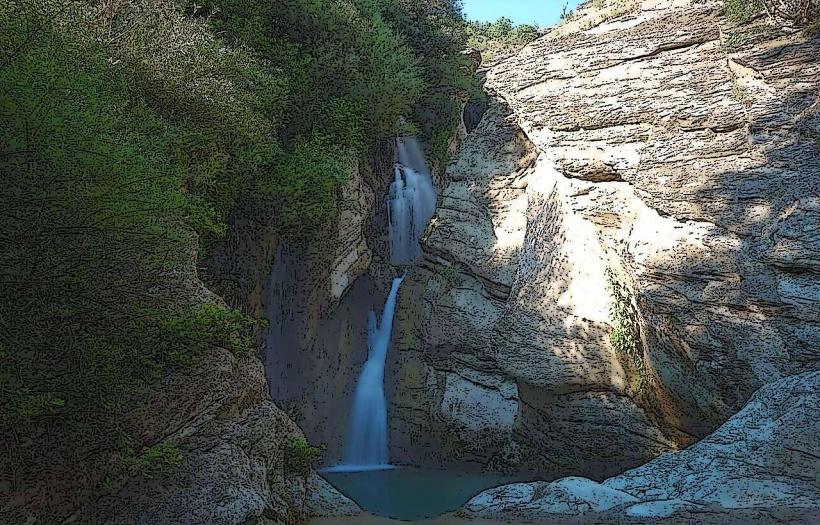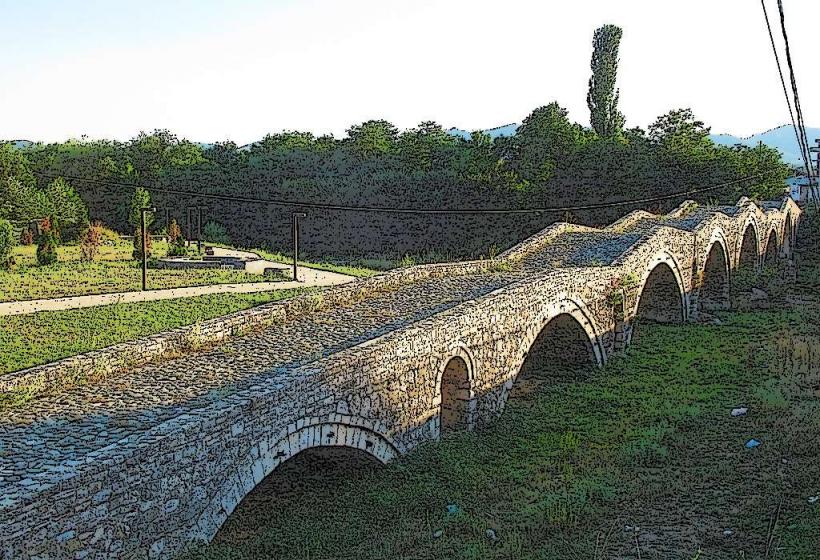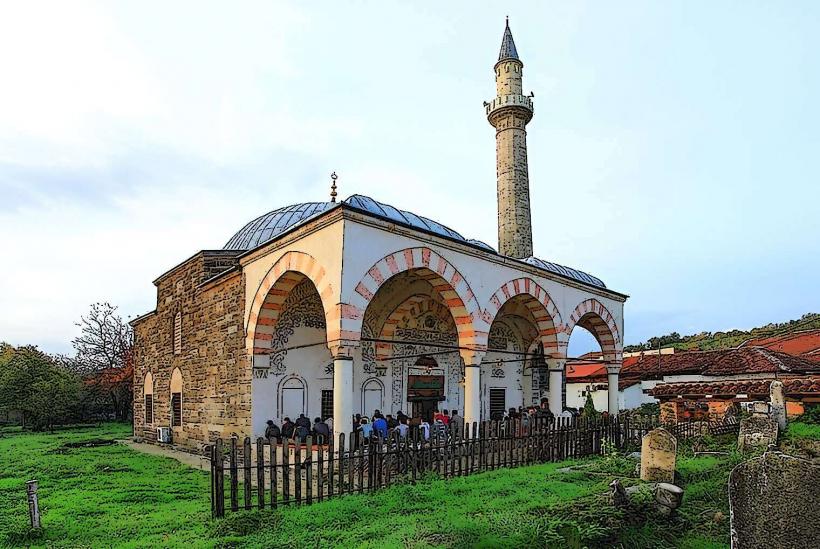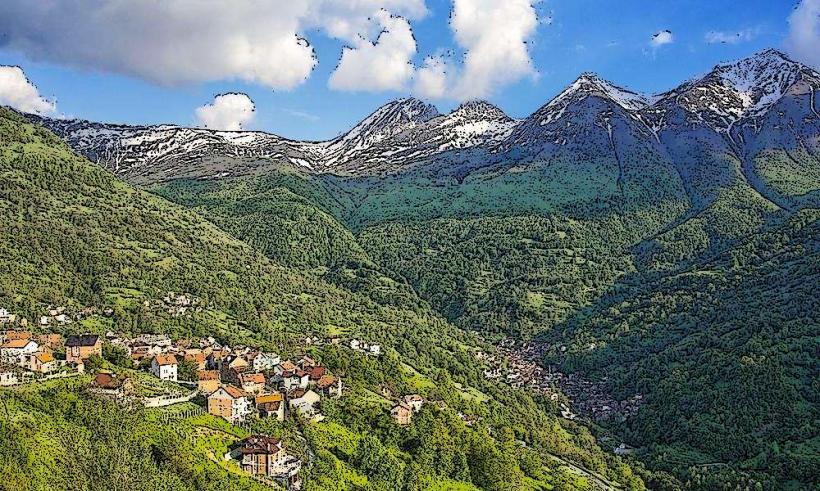Information
City: PecCountry: Kosovo
Continent: Europe
Peć (Peja) is a city in western Kosovo, located at the foot of the Prokletije Mountains. It is one of Kosovo’s most important cities, both historically and culturally. Peć is the administrative center of the Peć District and has a population of around 100,000 people. The city is known for its beautiful landscapes, rich history, and its role as an important center for Serbian culture and religion.
Here’s a detailed look at Peć (Peja), excluding landmarks:
Historical Background
Peć has a long history, with evidence of human settlement in the area dating back to the prehistoric era. It was an important Roman and Byzantine settlement, with significant development during the medieval period. The city was particularly notable during the time of the Kingdom of Serbia in the 13th and 14th centuries.
In the 14th century, Peć became an important religious center for the Serbian Orthodox Church. It was the site of the Patriarchate of Peć, the seat of the Serbian Orthodox Patriarch, which made it an important center for Serbian culture, politics, and religion for centuries.
After the Ottoman conquest of the region in the 15th century, Peć became part of the Ottoman Empire. During this period, it continued to be an important religious center and developed further under Ottoman rule. The Ottoman period left a significant cultural imprint on the city, with many traditional architectural elements still visible today.
In the 20th century, Peć was part of the Kingdom of Yugoslavia, and later, the Socialist Federal Republic of Yugoslavia. After the dissolution of Yugoslavia, Peć became part of Kosovo, which declared independence from Serbia in 2008.
Demographics and Population
Peć has a predominantly Albanian population, though there is a significant Serb minority, especially in the surrounding villages. The city and its surrounding areas have been a center of ethnic tensions in recent decades, particularly during and after the Kosovo War (1998-1999).
The population of Peć has fluctuated over time, particularly due to the war and the political instability that followed. Many ethnic Serbs were displaced or left the area after the war, but Peć continues to be home to a mix of Albanian, Serbian, and other ethnic communities.
Political Importance
Peć plays an important political role in Kosovo. While it is not the capital, it is the administrative center of the Peć District, and it holds significance as a cultural and historical center for the Serbian community in Kosovo.
The city is part of Kosovo’s western region, which is home to a mix of ethnic groups, and is a key point of interest for regional politics. The unresolved status of Kosovo, particularly in relation to Serbia, has left Peć and other cities in Kosovo politically and socially affected by the ongoing ethnic and territorial disputes.
Economy
Peć's economy is based on a mix of agriculture, light industry, and services. Historically, the region has been known for its agricultural production, particularly the cultivation of fruit and vegetables, as well as the development of various handicrafts and textiles.
In recent years, the economy of Peć has faced challenges, including the aftermath of the Kosovo War, high unemployment, and lack of significant investment. However, there have been efforts to revitalize the local economy, particularly through the promotion of tourism, which has grown due to Peć's rich cultural heritage and natural beauty.
The presence of the Peć Industrial Zone has helped contribute to the local economy, providing jobs in industries such as textiles, machinery, and food processing. However, the city is still largely dependent on the broader economic conditions in Kosovo, which continues to face economic difficulties.
Cultural Life
Peć is known for its rich cultural heritage, with deep roots in Serbian history and Orthodox Christianity. The city has long been an important center for Serbian culture, particularly during the medieval period when it was the seat of the Serbian Patriarchate.
Today, the city still holds significant cultural importance for the Serbian community. Cultural events, festivals, and exhibitions often celebrate both its Serbian heritage and the modern culture of Kosovo.
The city is home to various museums, cultural centers, and galleries, such as the Peć Cultural Center, which promotes local art, music, and folklore. There are also several theaters and music schools that contribute to the vibrant cultural scene.
Peć is also known for its annual events, such as the Peć Cultural Week, where local and international artists gather to showcase their works.
Education
Peć has a number of educational institutions, including primary and secondary schools, as well as higher education facilities. The University of Peć, established after the war, offers various programs, particularly in the fields of social sciences, engineering, and humanities.
However, the education system in Peć, as in many parts of Kosovo, faces challenges, including limited resources, outdated facilities, and low teacher salaries. Despite these challenges, the education system has improved in recent years, with international support helping to fund various reforms.
Infrastructure and Transportation
Peć is well-connected to the rest of Kosovo and neighboring countries, particularly Albania and Montenegro. The city is served by a network of roads that connect it to Pristina (the capital of Kosovo) and Mitrovica, as well as to Albania via the mountainous border.
Peć also has a railway station, although Kosovo’s rail network is underdeveloped and faces logistical challenges. Peć International Airport is located nearby, providing connections to the broader region, although air travel from Kosovo remains limited.
In recent years, Peć has seen investments in its infrastructure, including improvements to road networks and public transportation. However, like much of Kosovo, the city still faces challenges in terms of modernizing public services, including water and electricity distribution, waste management, and urban planning.
Challenges and Future Prospects
Peć, like many parts of Kosovo, faces several challenges:
Ethnic Tensions: The presence of both Albanian and Serb communities in the city, along with the broader political situation in Kosovo, continues to affect social harmony and peace. There are ongoing issues with integration and coexistence, particularly in the aftermath of the Kosovo War.
Economic Development: Although there have been some improvements, Peć's economy remains underdeveloped compared to other cities in Kosovo. Unemployment, particularly among the youth, remains high, and the economy is still recovering from the impact of the war.
Infrastructure: While improvements have been made in infrastructure, Peć still faces issues with urbanization, waste management, and public services. Continued investment in infrastructure is needed to support the city’s growing population.
Political Stability: The ongoing political instability in Kosovo, particularly regarding its status and the relations with Serbia, continues to affect the development of Peć and its role in the broader region.
Conclusion
Peć is a city of historical and cultural significance in Kosovo. While it faces challenges, particularly with regard to its complex ethnic and political landscape, it is also a city that is steadily growing and evolving. The city’s natural beauty, rich cultural heritage, and historical significance make it an important part of Kosovo's identity, and its future will depend on continued efforts to promote peace, economic development, and social integration.

